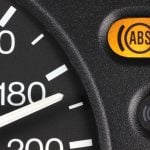Your day might be going great until you see those flashing symbols appearing. The letters ‘TPMS’ have appeared on your car’s dashboard. Should you be concerned? Don’t be worried because, unlike other serious warning lights, the TPMS light isn’t that serious. The TPMS light probably indicates that you need more air in your tires. This is mostly a safety feature in premium cars.
TPMS stands for Tire Pressure Monitoring System. The tire pressure sensors built into your vehicle’s tires track their air pressure. If one of your vehicle’s tires isn’t at the suggested pressure, the sensor goes off, and the light on your dashboard alerts you to add air to your car’s tires. This usually occurs when one or more of the tire’s air pressure has fallen below 25% of the recommended air pressure level. These tires usually come with an integrated tire pressure sensor. The TPMS warning light will also appear in the event of a rapid deflation–the result of a blowout or a flat–but in these cases, you’ll probably notice the issue itself before you notice the dash light!
What Is TPMS Used For?
TPMS is primarily used for tracking air pressure, under-inflation, and low pressure. TPMS is also a convenient feature that reduces the need for timely air pressure checks.
How Does TPMS Work?
Most premium cars come with a standard TPMS, and each of your tires will come equipped with an integrated air pressure sensor. The sensor keeps assessing the pressure on a time interval basis. So you can be aware of the changes as soon as they occur. The TPMS light will only come on if any one of them has low air pressure. The warning light may also flash on if the tire loses pressure due to a puncture or other external damage. You should pull over and check your tire pressure to see if the light comes on and stays on.
How Is TPMS Shown?
Some cars will display a symbol that looks like a flat tire with an exclamation mark in the middle
What to Do If the TPMS Indicator Comes On
Most gas stations and workshops will fill your tires for a small fee. Check the tire pressure and make sure it’s at the recommended levels. You can also try changing with the spare tire. If that doesn’t work, schedule a service for your vehicle
Why Do the Tires Keep Losing Air Pressure?
The gradual loss of air pressure is completely natural. The level of air pressure loss depends on the environmental conditions in which the tires are being used.
Should I Check the Air Pressure of My Tires?
It’s advisable to check your tires’ air pressure at least once per month.
Benefits of Properly Inflated Tires
- Reduced tread wear and better movement.
- Higher average fuel economy
- Improved traction
- Reduced risk of flat tires.

Sara Sam may not look like your typical car and finance expert, but don’t let that fool you. With over four years of experience in the industry, she knows all the ins and outs of cars, car insurance, and refinancing. You can trust Sara to help you navigate the often-confusing world of automobiles and financing.


















